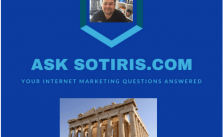Your 101 on Native Advertising
Native advertising is all about driving targeted traffic without breaking the bank. Sounding good? Here’s your low down on this stream of online media that was born the day Google introduced sponsored listings.
What is a native ad?
A stream of paid media where the user experience of an ad happens in matching ‘form’ and function’ to the content that it’s appearing alongside. What do we mean by these?
The form means the ad matches the aesthetic of the webpage on which it’s found. It appears like ‘natural content’.
The function refers to how the native ad acts consistently with the native user experience. It functions like ‘natural content’.
So, for example, if you are on a blog you may encounter an ad that looks and feels quite like the actual content of the page. Another example from a New Zealand SEO Agency – SEO Shark you may find relatable, is on Facebook… How many times have you come across a sponsored in-feed or in-messenger ad? I find myself amazed and also a little creeped out at how these ads are also always relevant to things I’ve been talking about, like camping.
Why has it become a thing?
Click-through rates are the proportion of users (out of total users viewing a page) who arrive at the page via a specific link. This may be through email, another webpage, or advertisement.
Now, CTR’s have been on a big decline since 2000 – really, since the first banner ad was recorded. Ever since, the CTR’s of banners have grown smaller. This phenomenon has been termed banner blindness. It came about as we conditioned ourselves to ignore banners as we saw them as having little immediate value.
So, marketing agencies had to put their heads together and find new ways of getting people’s attention. How? Here are a few ways.
- Stick out like a sore thumb – if you want your banner to be noticed, you’re going to
have to make it very obvious. Obnoxious even. Beautiful, camouflaging displays don’t make the cut…
This is why you find banners in bright, displaced colours, flashing at you or something else incredibly annoying. Maybe not in the most positive light but it nonetheless leaves an impression, that’s for sure.
2. Blend in with the content – so the ad matches both the visual design and activity of the webpage.
Thus, the latter and better of these options has set the avenue for native ads. And it’s working. Eye-tracking studies have observed that consumers view native ads 52% more than traditional banner ads.
So, how do you do native advertising?
Here are our top 2 tips to get you started on native advertising…
- Find relevant content
Find a blog post or web page with content that you can clearly relate to your product or service. The goal is to look for natural opportunities to set up a link to your own content that’s meaningfully relevant.
2. In-feed ads
Create your own in-feed ad for Facebook. As this has the most sophisticated ad-targeting, this is an excellent way to boost traffic to your new native content.
A great way to start is to share your content on your Facebook page, highlighting the article title and photo. You can caption it with a question or statement to make viewers curious.
Underneath your post, you’ll find Facebook’s ‘boost’ options. And the great thing is, this is can be as budget-friendly as you need it to be. Even $5 towards a boost will reach more Facebook users than you would organically.

